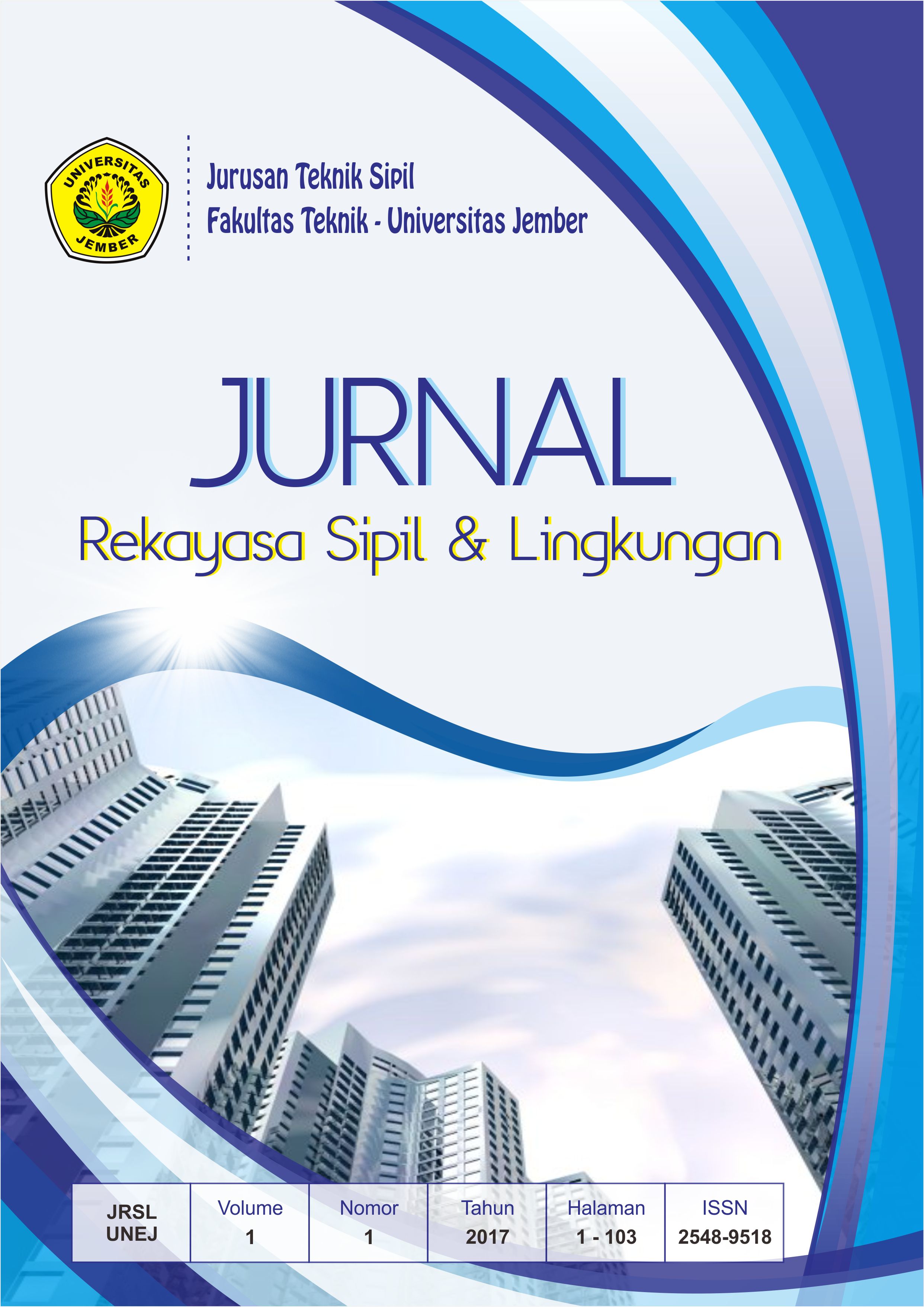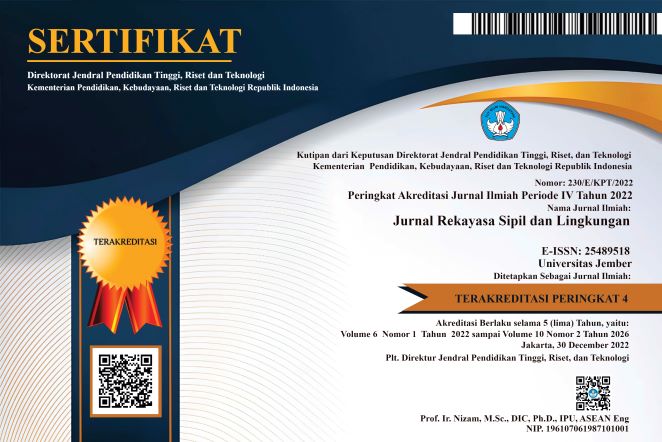THE CONTRIBUTION OF POLYCARBONATE FLEXURAL STRENGTH INTO POROUS CONCRETE SLAB
Kontribusi Kuat Lentur Polikarbonat Pada Pelat Beton Berpori
Abstract
Polycarbonate is thermoplastic polymer group. It is easily formed using heat. Plastic has many advantages, namely thermal resistance compared to other types of plastic, resistant to impact, and very clear. The purpose of this research is to replace steel in reinforced concrete with polycarbonate and it is expected to contribute a good flexural strength on the porous concrete slab. The test specimen is 40x40x5 cm and the variation widths of polycarbonate are 2 cm, 4 cm, and 6 cm. Polycarbonates are arranged in the x direction and y direction, such as the reinforcement in concrete slab. The distance between the pores in concrete slab is 8 cm. Once the concrete aged 28 days, the next step is testing the flexural strength. The results show the concrete compressive strength is 24.699 MPa. The biggest average flexural test is in porous concrete slab with diameter of reinforcement is 6 mm. Meanwhile, for porous concrete slab without reinforcement and porous concrete slab with polycarbonate have flexural strength which is almost the same. This is because there is no bond between polycarbonate and concrete, so that the adhesion between them is very small and virtually non-existent. In addition, the results show that there is no contribution of polycarbonate flexural strength in concrete slab.
Polikarbonat adalah suatu kelompok polimer termoplastik yang mudah dibentuk dengan menggunakan panas. Plastik ini memiliki banyak keunggulan, yaitu ketahanan termal dibandingkan dengan plastik jenis lain, tahan terhadap benturan, dan sangat bening. Tujuan penelitian ini adalah mengganti material baja pada beton bertulang dengan polikarbonat dan diharapkan dapat memberikan kontribusi kuat lentur yang baik pada pelat beton berpori. Ukuran benda uji adalah 40x40x5 cm, dimana variasi ukuran lebar polikarbonat adalah 2 cm, 4 cm dan 6 cm. Polikarbonat disusun dalam arah x dan arah y, seperti penulangan pada pelat beton. Selanjutnya dilakukan pengecoran. Jarak antar pori pada pelat beton adalah 8 cm. Setelah beton berumur 28 hari maka dilakukan pengujian kuat lentur. Hasil penelitian menunjukkan kuat tekan karakteristik beton adalah sebesar 24.699 MPa. Hasil kuat lentur rata-rata yang paling besar terjadi pada pelat beton berpori dengan tulangan diameter 6 mm, sedangkan untuk plat beton berpori tanpa tulangan dan dengan polikarbonat hasil kuat lenturnya hampir sama. Hal ini dikarenakan tidak adanya lekatan antara lembaran polikarbonat dan beton, sehingga daya lekat polikarbonat terhadap beton sangat kecil dan bisa dikatakan tidak ada. Selain itu, hasil menunjukkan bahwa tidak adanya kontribusi kuat lentur polikarbonat pada beton berpori.






